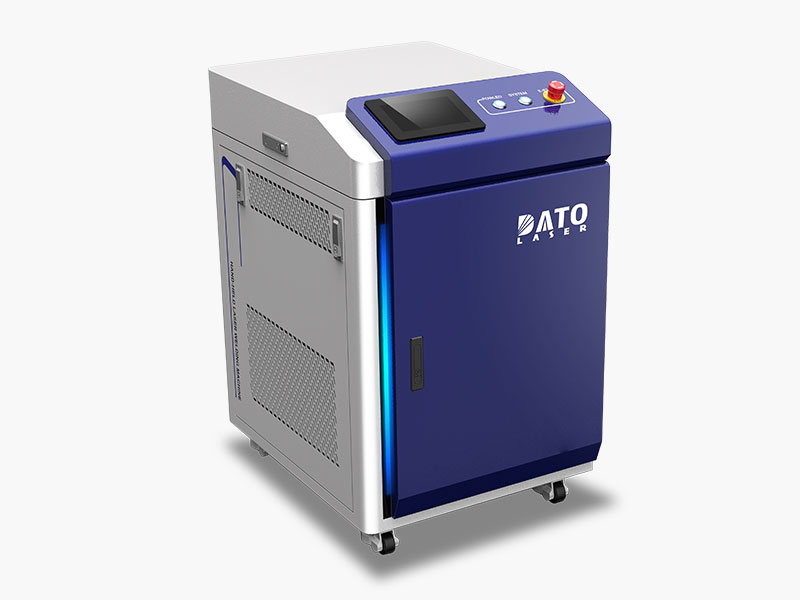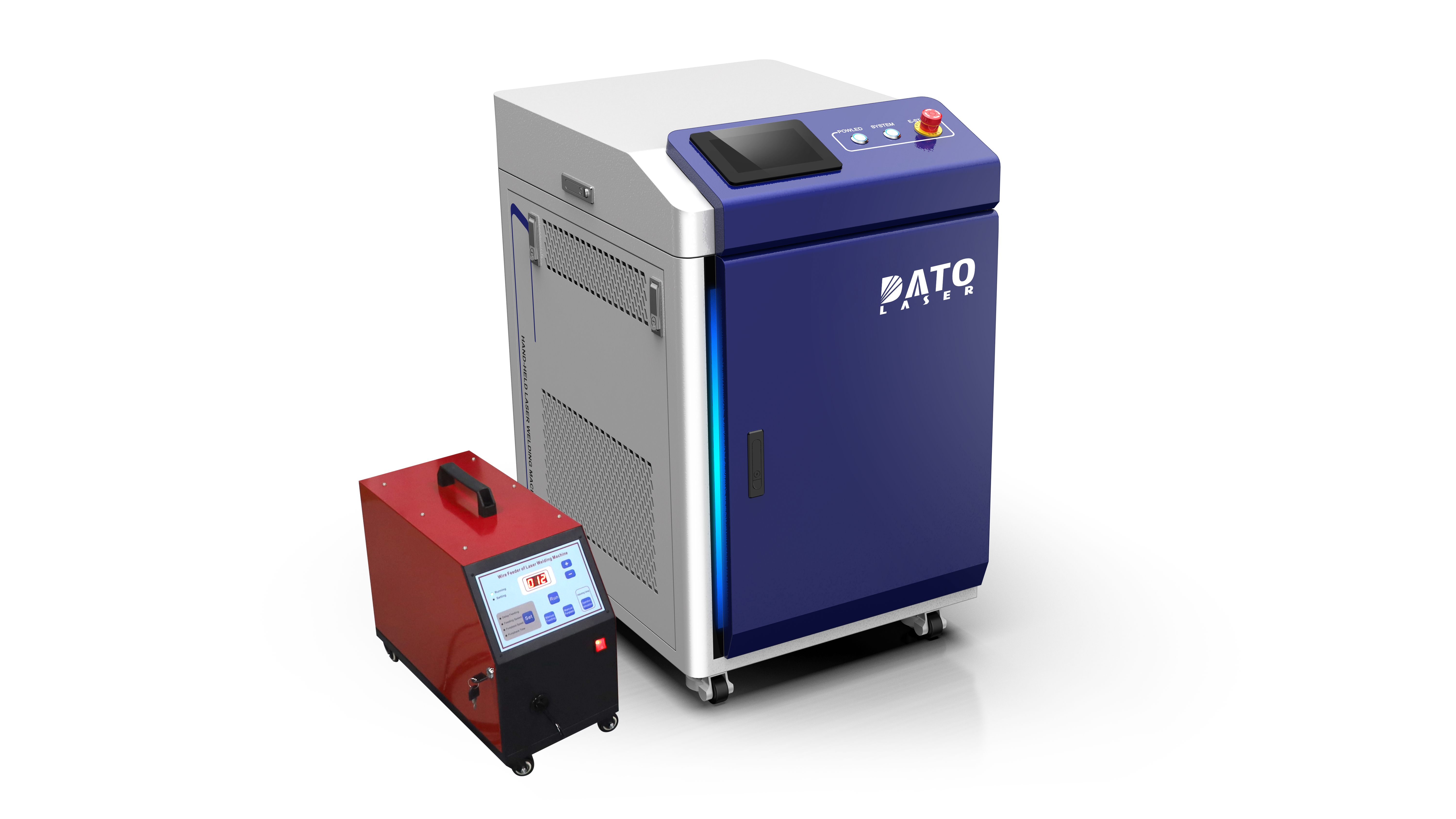Can You Upgrade Your Existing Welding Setup to a Laser Welding Machine?

In the dynamic world of manufacturing, businesses are constantly seeking ways to enhance efficiency, precision, and cost-effectiveness. One question we often hear at DATO and Leapion is, “Can I upgrade my existing welding setup to a laser welding machine?” The short answer is yes—but the process requires careful planning and expertise. As leaders in laser technology with over 17 years of experience, we’ll guide you through the feasibility, benefits, and steps involved in transitioning to laser welding.
Understanding Laser Welding Technology
What Makes Laser Welding Different from Traditional Welding?
Traditional welding methods, such as MIG (Metal Inert Gas), TIG (Tungsten Inert Gas), or arc welding, rely on heat generated by electrical arcs or gas flames to melt and fuse materials. While effective, these techniques often involve slower speeds, higher heat input, and a greater risk of distortion or material damage.
Laser welding, however, uses a highly focused beam of light to create precise, localized heat. This allows for faster processing, minimal thermal distortion, and the ability to weld complex geometries or dissimilar materials (e.g., aluminum to steel). Laser welding systems are also compatible with automation, making them ideal for high-volume production environments.
Is Your Current Setup Compatible with Laser Welding?
Evaluating Your Existing Infrastructure
Upgrading to a laser welding machine doesn’t necessarily mean scrapping your entire setup. Instead, it involves integrating laser technology into your current workflow. Here’s what to consider:
Power Requirements: Laser welding machines require stable electrical power, often with higher voltage demands than traditional welders. Ensure your facility’s electrical infrastructure can support this.
Workspace Modifications: Laser systems need adequate space for the machine, cooling systems (like chillers), and safety enclosures to protect operators from laser radiation.
Material Compatibility: Laser welding excels with metals like stainless steel, aluminum, titanium, and copper. If your work involves these materials, the transition will add significant value.
Control Systems: Modern laser welders often integrate with CNC (Computer Numerical Control) systems or robotic arms. Assess whether your existing software and hardware can communicate with laser equipment.
Retrofitting vs. Full System Replacement
For many businesses, retrofitting—adding laser welding capabilities to an existing setup—is a cost-effective solution. For example, integrating a laser welding head into a CNC machine or robotic arm can modernize your production line without overhauling it. However, older systems with limited automation may require a full upgrade to maximize laser welding’s potential.

Benefits of Upgrading to Laser Welding
Unmatched Precision and Quality
Laser welding produces narrow, deep welds with minimal heat-affected zones (HAZ). This precision reduces post-welding cleanup, minimizes material warping, and ensures consistent results—critical for industries like aerospace, medical devices, and automotive manufacturing.
Increased Speed and Productivity
Laser welding operates at speeds up to 10 times faster than traditional methods. For instance, a 6kW fiber laser can weld steel sheets at 60 meters per minute, drastically reducing cycle times and boosting output.
Enhanced Flexibility and Automation
Laser welding systems can be programmed for complex patterns, micro-welds, or remote welding (where the laser head is guided by mirrors). Pairing them with robotics enables 24/7 production with minimal human intervention, ideal for industries prioritizing scalability.
Cost Savings Over Time
While the initial investment in laser welding technology is higher, the long-term savings are substantial. Reduced energy consumption, lower material waste, and fewer defects translate to a faster ROI. Maintenance costs are also lower, as laser systems have fewer consumables (e.g., no need for welding wire or gas shields in some applications).
Key Steps to Upgrade Your Welding Setup
Step 1: Assess Your Production Needs
Begin by identifying gaps in your current welding process. Are you struggling with slow throughput, inconsistent quality, or high rework rates? Laser welding addresses these challenges but works best when aligned with specific goals, such as:
Welding thin or heat-sensitive materials.
Achieving airtight or hermetic seals for medical or electronic components.
Automating high-volume production lines.
Step 2: Partner with a Laser Solutions Expert
Transitioning to laser welding requires technical expertise. At DATO and Leapion, our engineers conduct online evaluations to determine compatibility, recommend equipment (e.g., pulsed lasers for delicate tasks or continuous-wave lasers for deep penetration), and design customized integration plans.
Step 3: Train Your Team
Laser welding involves new skills, from programming parameters (e.g., pulse duration, beam intensity) to maintaining optics. We offer comprehensive training programs to ensure your team operates the equipment safely and efficiently.
Step 4: Optimize Post-Upgrade Workflows
After installation, monitor performance metrics like weld speed, defect rates, and energy usage. Fine-tune settings to match evolving production demands, and leverage software updates to stay ahead of technological advancements.
Real-World Applications of Laser Welding Upgrades
Automotive Manufacturing
Automakers use laser welding for battery tabs in electric vehicles (EVs), body-in-white assemblies, and exhaust systems. The precision of laser welding ensures strong, lightweight joints critical for EV performance and safety.
Medical Device Production
Surgical instruments, implants, and pacemakers require flawless, contamination-free welds. Laser welding’s ability to work with biocompatible materials like titanium makes it indispensable in this sector.
Electronics and Energy Storage
From smartphone components to lithium-ion batteries, laser welding delivers reliable electrical connections without damaging sensitive circuits.
Addressing Common Concerns About Upgrading
“Is Laser Welding Safe for My Team?”
Modern laser welding machines include safety features like enclosed workstations, fume extractors, and emergency stop functions. Proper training and adherence to protocols (e.g., wearing protective eyewear) mitigate risks effectively.
“Will the Transition Disrupt My Operations?”
With careful planning, upgrades can be phased to minimize downtime. Modular systems allow gradual integration, and DATO’s team ensures swift installation and calibration.
Why Choose DATO and Leapion for Your Laser Welding Upgrade?
With 120 dedicated researchers and a global presence spanning 80+ annual exhibitions, DATO and Leapion are pioneers in laser technology. Our laser welding machines are:
Certified and Compliant: Meeting ISO9001, EU CE, and US FDA standards.
Versatile: Compatible with sheet metal, tubes, and complex 3D geometries.
Future-Ready: Equipped with AI-driven monitoring and adaptive optics for smart manufacturing.
Conclusion
Upgrading to a laser welding machine is a strategic move that enhances precision, productivity, and profitability. While the process requires careful evaluation and expert guidance, the long-term benefits far outweigh the initial effort. At DATO and Leapion, we’re committed to helping businesses navigate this transition seamlessly, offering cutting-edge laser welding solutions tailored to your unique needs.
Related Blogs
-
 Exploring the Safety, Precision, and Industrial Benefits of Laser Surface CleaningIn today’s fast-paced industrial world, where quality, efficiency, and sustainability are top priorities, manufacturers are constantly seeking better ways to clean metal surfaces without compromising material integrityBlog
Exploring the Safety, Precision, and Industrial Benefits of Laser Surface CleaningIn today’s fast-paced industrial world, where quality, efficiency, and sustainability are top priorities, manufacturers are constantly seeking better ways to clean metal surfaces without compromising material integrityBlog -
 A Complete Guide by DATO and LeapionIn modern industry, surface preparation and maintenance play a crucial role in achieving high-quality manufacturing results. Laser cleaning machines have emerged as one of the most innovative, efficient, and environmentally friendly tools for removing contaminantsBlog
A Complete Guide by DATO and LeapionIn modern industry, surface preparation and maintenance play a crucial role in achieving high-quality manufacturing results. Laser cleaning machines have emerged as one of the most innovative, efficient, and environmentally friendly tools for removing contaminantsBlog -
 Laser cleaning machines are revolutionizing industrial surface cleaning by offering a faster, safer, and more eco-friendly alternative to traditional methods. Whether removing rust, paint, oil, oxide, or other surface contaminants, laser cleaning has become a cutting-edge solution in manufacturing,Blog
Laser cleaning machines are revolutionizing industrial surface cleaning by offering a faster, safer, and more eco-friendly alternative to traditional methods. Whether removing rust, paint, oil, oxide, or other surface contaminants, laser cleaning has become a cutting-edge solution in manufacturing,Blog -
 Introduction: Transforming EV Battery Manufacturing Through Laser TechnologyThe electric vehicle revolution has accelerated dramatically over the past decade, bringing with it unprecedented challenges and opportunities in battery manufacturing. As global automakers commit billions to electrificationBlog
Introduction: Transforming EV Battery Manufacturing Through Laser TechnologyThe electric vehicle revolution has accelerated dramatically over the past decade, bringing with it unprecedented challenges and opportunities in battery manufacturing. As global automakers commit billions to electrificationBlog













